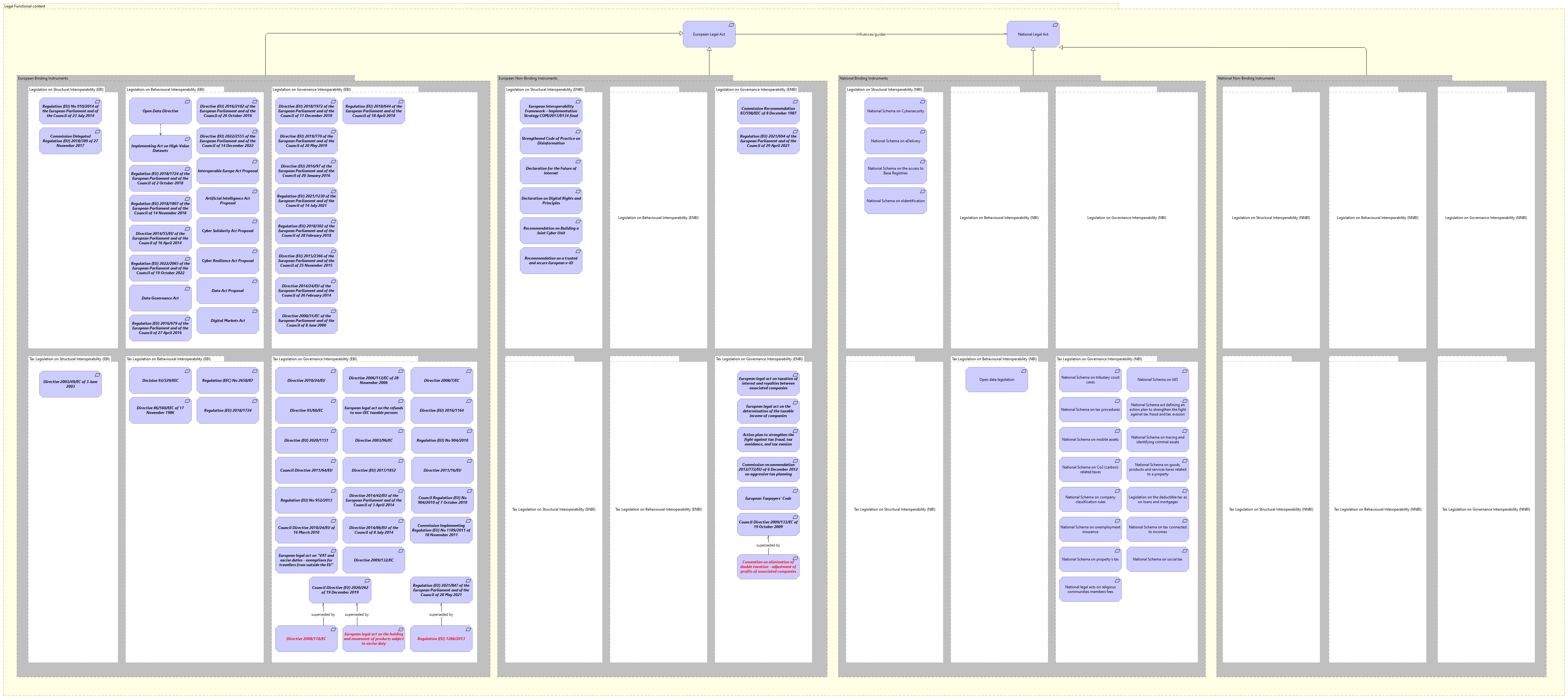
The ‘Legal view – Binding Power and Jurisdiction’ view presents and describes the legal paradigm and landscape for the development of digital public services. It is done through binding and non-binding instruments at the European and National levels. These instruments, in the form of legal texts, establish the foundation for harmonization, collaboration, and cooperation across various domains within the European Union (EU) member states.
At the highest level, there are European Legal acts, which encompass overarching legislation applicable across all member states. These acts provide a framework for ensuring interoperability and cohesion within the European Union's legal landscape. They serve as the cornerstone of harmonization efforts and facilitate the exchange of information and services across borders. Beneath the European Legal Acts lie National Legal Acts, which are specific to individual member states. These acts reflect the adaptation of European legislation to the national context, addressing unique requirements and considerations. While National Legal acts maintain alignment with European Legal acts, they offer the necessary flexibility to accommodate country-specific needs and nuances.
Legislation on Structural Interoperability establishes the technical standards and protocols necessary for seamless data exchange and integration between systems and applications across member states. Legislation on Behavioural Interoperability focuses on promoting consistent behaviour and responsible conduct among individuals and organizations involved in cross-border operations. It establishes common norms and guidelines to foster trust, transparency, and accountability. Legislation on Governance Interoperability defines the governance structures, processes, and decision-making frameworks that facilitate effective coordination and collaboration among member states and stakeholders, ensuring the successful implementation of interoperability objectives.